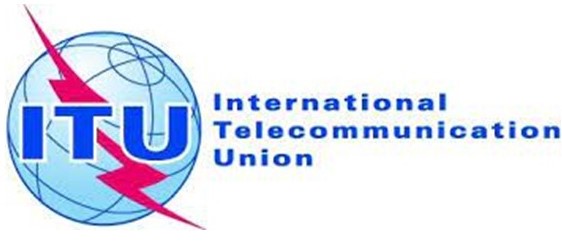Image: Shutterstock
Blog Editor’s Note: If the International Telecommunications Union, a UN body that can’t say anything unless EVERYONE agrees, says something, it must be true!
The best way to ensure any nation, especially one as large and diverse as the U.S., has the precise timekeeping it needs for telecom and everything else is a national timing architecture based on UTC. That is the easiest, best way to ensure systems can interoperate nationwide.
Telecom CEOs and senior executives acting as the National Security Telecommunications Advisory Committee (NSTAC) agree. They endorsed our white paper describing the need for and possible make up of such an architecture in their May 2021 report to the President. They also recommended government funding.
But does the government really need to get involved? There are some… ok, a few… who say that the free market will provide. A national timing architecture will appear organically without the need for government dollars or leadership.
Well, NSTAC said the government needs to provide at least some funds, become the lead customer for example, because timing service providers can’t compete with free GPS on the scale needed. There is no business case to build and operate this fundamental national tech infrastructure.
And even if a national timing architecture were to grow on its own as the result of commercial incentives, would we be happy with the result?
The internet grew organically driven by commercial incentives. Are we happy with it? Happy with the anonymity, trolls, ransomware, foreign powers ability to influence elections, the impact of social media?
We think a national timing architecture should be developed more carefully and with the nation’s security and best interests in mind.
 We will be discussing this at the New York Stock Exchange on the 17th of January at the ATIS Time and Money Workshop. Sign up here and join us!
We will be discussing this at the New York Stock Exchange on the 17th of January at the ATIS Time and Money Workshop. Sign up here and join us!

Synchronization technologies evolving for 5G and beyond
By ITU News
Precise timekeeping is fundamental to effective telecommunications network operation.
It is more important than ever in 5G and will be even more so in future mobile networks, with new radio technologies and network architectures arising to support increasingly demanding use cases, such as time-sensitive networking for automated vehicles or controlling robots in smart factories.
The standardization arm of the International Telecommunication Union includes a working group on network synchronization and time distribution performance (Q13/15).
The group’s Rapporteur and Associate Rapporteur spoke to ITU News about how ITU standardization work meets evolving synchronization demands.
“Both radio access networks (RANs) and transport networks require synchronization, often in combination, and always aiming for a good balance of timing accuracy, availability, and cost,” highlights Stefano Ruffini from Calnex Solutions, Q13/15 Rapporteur.
The distribution of synchronization to radio access nodes can be addressed locally, with locally deployed Global Navigation Satellite System (GNSS) receivers, the distribution of synchronization over the radio interface, or both.
Synchronization can also be supported, alternatively or additionally, by distributing synchronization over transport networks, the core optical networks that underpin global communications.
Timekeeping standards and profiles
Transport-based solutions rely on two key technologies: the Precision Time Protocol (PTP) for time synchronization over the packet layer, as specified by IEEE Standard 1588 from the Institute of Electrical and Electronics Engineers (IEEE); and Synchronous Ethernet, providing frequency synchronization over the physical layer in line with the ITU standards G.8261, G.8262 and G.8262.1.
“Telecom profiles” show which PTP configuration options are best suited to telecom-related applications.
Q13/15 has specified, and periodically enhances, three PTP telecom profiles:
- G.8275.1 –providing full timing support based on time-synchronization distribution in networks where every element is PTP compatible.
- G.8275.2 – supportingtime-synchronization distribution with partial timing support from the network.
- G.8265.1 – also providing partial timing support, based on frequency distribution in networks where not all equipment is PTP compatible.
“G.8275.2 is used in cases where you don’t have IEEE 1588 and Synchronous Ethernet in every node of the network,” explains Silvana Rodrigues from Huawei, Q13/15 Associate Rapporteur. “This profile is more used in North America, where you have GNSS receivers in base stations and need Precision Time Protocol as a backup for the base station when GNSS is lost.”
The standards continue evolving to meet the latest industry requirements and support new applications, such as 5G applications for industrial automation, notes Ruffini.
“These standards – along with others for clocks and related performance requirements – are enabling a more robust and interoperable deployment of frequency and time synchronization solutions, making them crucial in maximizing the benefits of 5G and future networks,” he says.
Keeping global time coherent
Frequency synchronization was once sufficient for all equipment to operate at the same speed.
Today, time synchronization is also key,” especially to support mobile networks operating with Time Division Duplex and emerging applications for industrial automation,” says Ruffini. “This is a really fundamental requirement in today’s networks, and it is expected to become even more important in the future.”
ITU standards have addressed the key aspects of 5G fronthaul, optical networks supporting cloud RANs.
“Now we are focused on analysing the performance impacts of temporary losses of physical-layer frequency synchronization, with a view to updating the time synchronization clock specification ITU G.8273.2,” says Rodrigues.
Q13/15 is also developing data sets for the management of frequency synchronization networks based on the physical layer, such as synchronous Ethernet, which will result in updates to the synchronization-layer functions provided by ITU G.781.
“Future work will deliver a new ITU G.8272.2 to protect networks against very long periods of GNSS loss,” says Rodrigues.
Such protection can be achieved by enhancing the resiliency of time synchronization networks, in part by interconnecting multiple master clocks to maintain accurate time synchronization in the form of a coherent network primary reference time clock.


